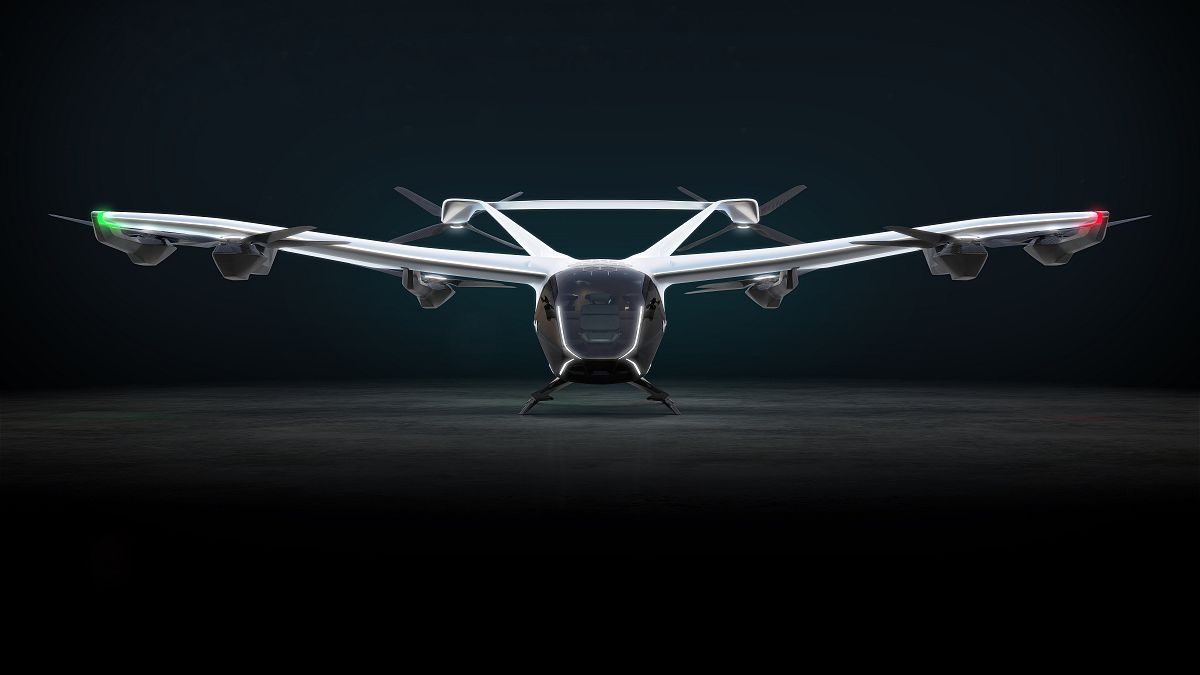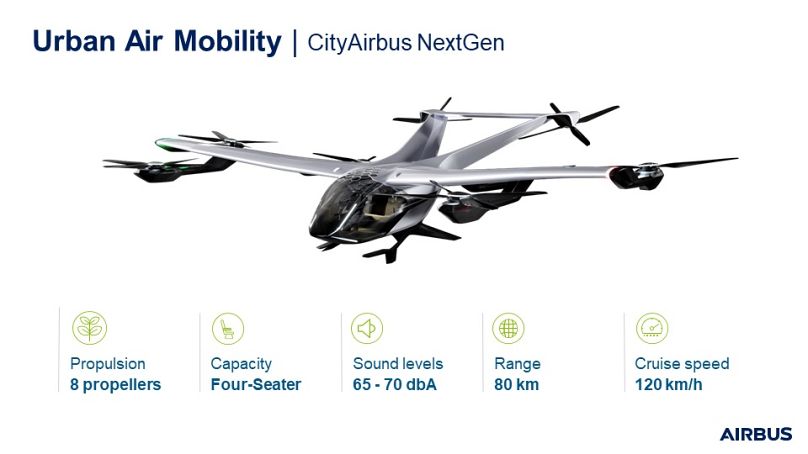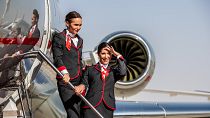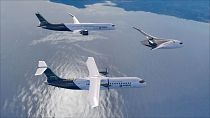Airbus Helicopters is building cleaner, cutting edge transportation solutions for the urban mobility market.
Imagine arriving at the airport after a long haul flight, but instead of hailing a cab on your own as you normally would do, you hop into a fully electric flying vehicle that is readily available at the airport’s vertiport. It looks like a quiet hi-tech crossover between a jet and a helicopter. In the vehicle, there are other passengers who are also taking this urban flight to complete the final leg of their journey.
The fully electric vehicle takes off and flies through the city, keeping a safe distance from other urban air vehicles and city infrastructure such as power lines and skyscrapers. As you get closer to your destination, the vehicle automatically knows where to stop and vertically lands to safely drop you off before taking the remaining passengers to their destinations. This is the future of integrated urban transportation.
New mobility solutions that are cleaner and make use of lower air space in increasingly congested urban areas are driving innovation in the Urban Air Mobility (UAM) market. The US UAM market alone is estimated to reach $18.81 billion in 2035 at a compound annual growth rate of 23.12% between 2023-2035 according to a recent industry report.
CityAirbus NextGen
With years of experience in developing air mobility technologies, Airbus has become a global leader in the UAM market. In September this year during the Airbus Summit 2021, the company announced the launch of its NextGen electric vertical take-off and landing aircraft (eVTOL). This is the third UAM vehicle built by Airbus. Altogether, the demonstrators have conducted 242 flight and ground tests and have flown over 1,000 km in test flights.
“We have learned a lot from the test campaigns with our two demonstrators, CityAirbus and Vahana. CityAirbus NextGen combines the best of both worlds with the new architecture striking the right balance between hover and forward flight,” Bruno Even, Airbus Helicopters CEO said in a recent statement.
The latest NextGen aircraft is equipped with fixed wings, a V-shaped tail and eight propellers electrically powered by advanced lithium-ion battery technologies. This vehicle has a capacity to fly at an 80 km range and is able to reach a cruising maximum speed of 120 km/h.
The compact design makes it well-suited for dense urban environments and applicable for a variety of uses such as aerial ride sharing, emergency medical services, tourism and other logistics. The NextGen prototype is expected to be complete and airborne by 2023, paving the way for certification in 2025, making the emerging UAM well underway.
Ecosystems must work together
Beyond the technological and engineering challenges of building zero-emission urban aircraft, critical social and logistical considerations need to be overcome before a commercial ecosystem can be created to welcome this new means of transportation. Public acceptance of hovering aircraft within cities, for example, or the integration of UAM aircraft into city planning are some of the challenges for the developing market.
“We are on a quest to co-create an entirely new market that sustainably integrates urban air mobility into the cities while addressing environmental and social concerns. Airbus is convinced that the real challenges are as much about urban integration, public acceptance, and automated air traffic management, as about vehicle technology and business models,” said Bruno Even.
In parallel with NextGen’s development, Airbus is working with governments, planners and city inhabitants to help create the necessary frameworks and infrastructure to make urban air mobility a reality this decade. “Urban Air Mobility must bring a true service to society if it is to be successful. This means that we cannot do it alone. We are developing working models of the full ecosystem including infrastructure, operations, safety and regulation, and first public service. This is how we engage with partners to co-create real working applications of UAM to pave the way for the new mobility system,” said Balkiz Sarihan, Head of UAM Strategy Execution and Partnerships. Electrical zero emission urban aircraft are part of the next revolution of aerospace and will usher in a new era of mobility.
Discover the highlights of the Airbus Summit 2021






